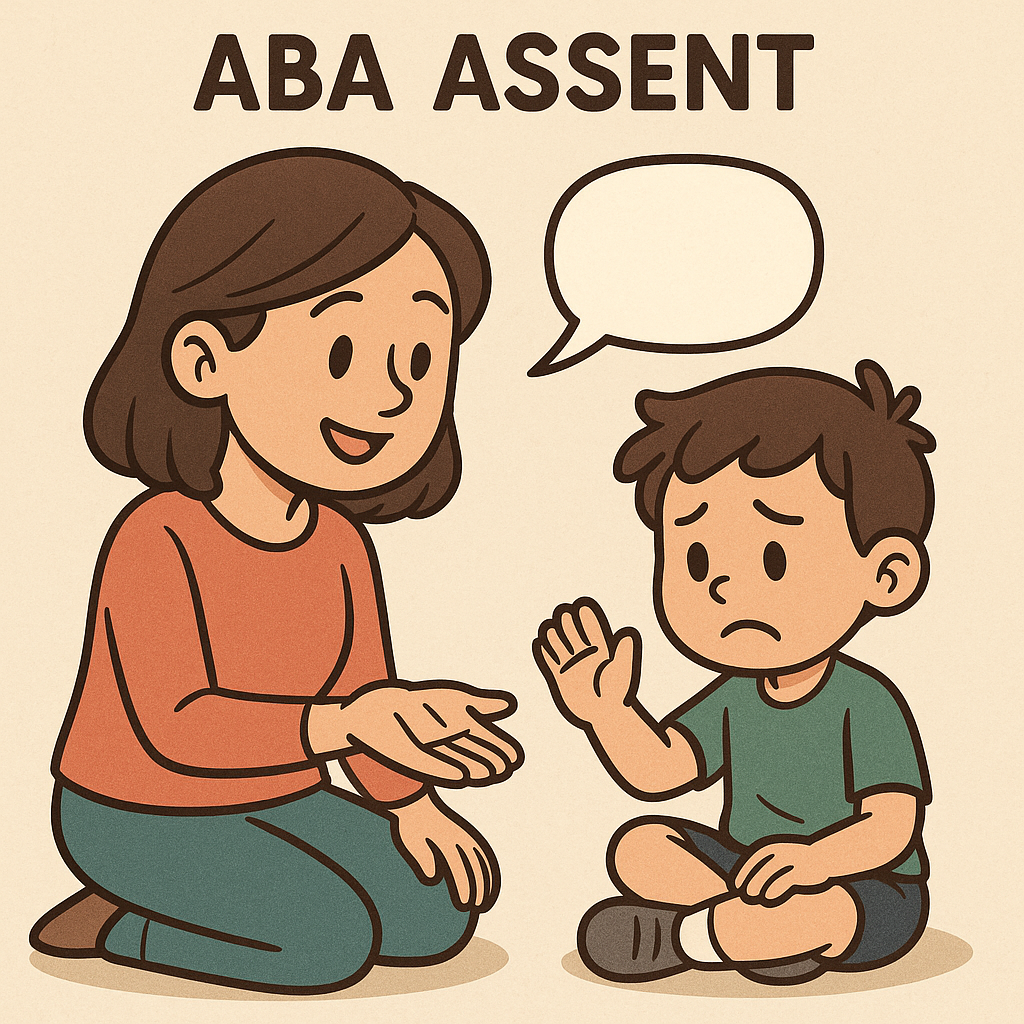
Perceptions and applications of ABA-based intervention are shifting for the better. Clinicians and therapists are moving away from a narrow focus on correcting behavior and embracing a more individualized, person centered approach. The truth is ABA must align with its seven dimensions, starting with the principle of being "Applied". This means interventions are socially significant, referring to creating goals that help the individual engage with the world around them. The key question is who decides what is significant? The era of trying to change every behavior is over. The client is the priority, guided by input from the input of people who interact with them daily. This evolution demonstrates a clearer understanding of ABA's purpose and affirms that every child, regardless of age, verbal ability, or cognitive level, deserves an active role in their therapy through assent (Breaux & Smith, 2023).
What is Assent?
Much like consent, assent is a child's own agreement to take part in an activity. The difference is children cannot legally give consent, and while parents or guardians can consent for them, assent is still needed. In ABA based intervention, assent is the child's independent "yes". Even if a child is nonverbal, their body language, engagement, or behavior can communicate yes or no. A child can show assent through nodding, leaning in, or moving closer. As parents, we advocate for our children by honoring the fact that they can withdraw assent at any moment. Silence or mere compliance is not assent. This shift in ABA places the child's emotional experience ahead of strict compliance or behavior change. Seeking assent will not disrupt your routines or reduce your influence as a parent; instead, it encourages you to more deeply understand your child. Seeking assent means actively considering your child, slowing down when they're struggling or showing signs of discomfort. It's about learning and honoring their signals and communication of all kinds by allowing them choice through collaboration. Remember, there is nothing inherently broken about a child with Autism Spectrum Disorder. ABA intervention is a tool for teaching new skills and reshaping harmful behaviors. Remember that learning happens when your child feels safe, heard, and understood.
Benefits of Assent-based ABA
Stronger Bond with your Child
When children understand they have the option to say "no," it creates a sense of safety and strengthens trust (Breaux & Smith, 2023).
Better Outcomes
Children tend to learn more effectively when activities are meaningful to them and when they choose to participate (Breaux & Smith, 2023).
Teaching your Child Self-Advocacy
Helping children communicate messages like "yes," "no," or "I need a break" supports the development of self-advocacy skills, which are vital for lifelong independence (Breaux & Smith, 2023).
Practical Ways to Incorporate Assent
Recognize Your Child's Signals
Learn about the ways your child uniquely shows "yes" and "no" behaviors. Pay attention to how your child shows discomfort through their actions, gestures, or expression.
Give Frequent Opportunities to Choose
Get creative about how you implement choice at home. Embed choice in how your order activities, what materials you use, or even location of work spaces. Your child should have multiple opportunities during the day to make choices.
Honor When They Step Away
When your child withdraws assent, it does not necessarily mean something is not working or that you are the problem. Take a moment to pause and adjust. There is no need to force anything. This can look like coming back to a certain task at a later moment, or rerunning a preference assessment (Does your child want to work towards a different reinforcer?). Be neutral and ask questions. Collaborate with your child and remember learning takes time. You delaying a task for a time is still a teaching moment!
Track Data
Take moments to make a note of times when your child agrees to participate or when they step away. Write down your A.B.C's. What was happening in the environment when you initiated the task (Antecedent)? What did your child do and what did their behavior look like (Behavior)? How did you respond to that behavior (Consequence)? As you take data, you can start to notice patterns and make sure that your approach to tasks and teaching new skills still considers their needs and preferences.
Remember
This evolution in ABA represents a commitment to respecting every child's voice and autonomy. By incorporating assent into your daily interactions, you're not just improving outcomes—you're building trust, communication skills, and your child's confidence in advocating for themselves throughout their life.
